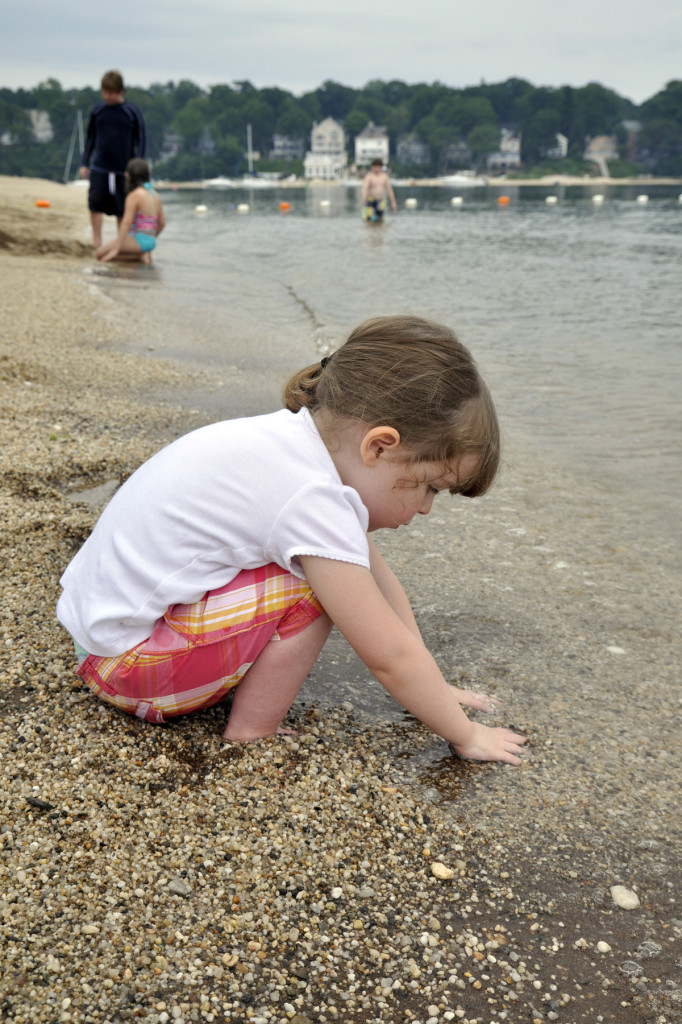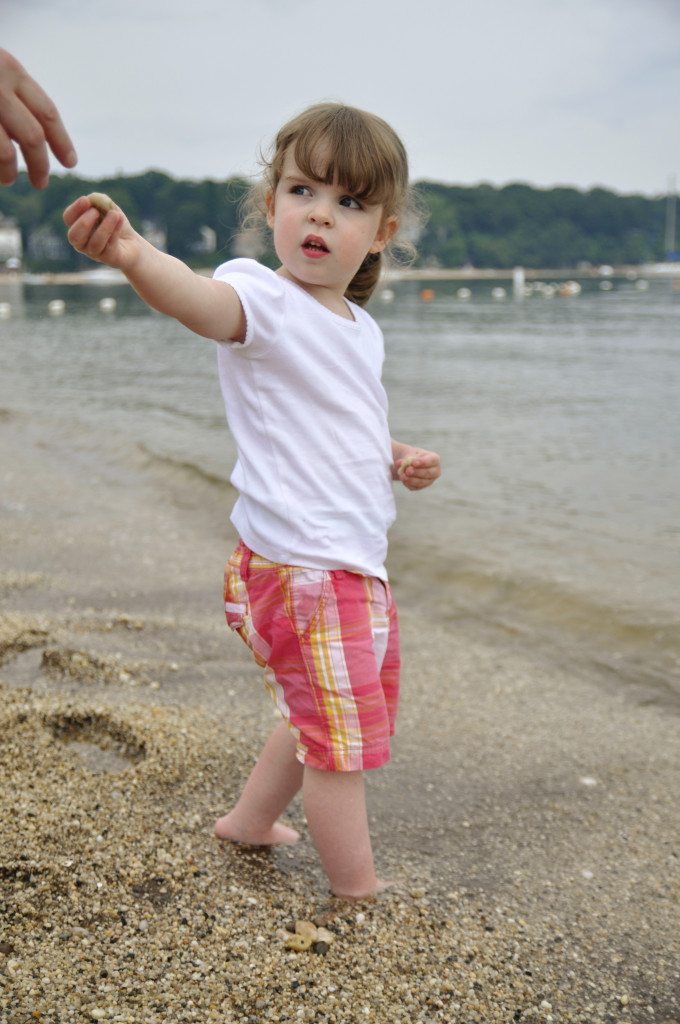It’s finally summer! And if your family’s like mine, beach figures heavily into the weekend. If you have young children that love to explore the beach, then get down on the sand with them. Make sure to bring a towel so that you can easily sit or even lay down close by in order to capture their explorations (and to keep sand on your hands to a minimum). Getting close and using a wide angle setting on your lens lets you show some more background to give a point of reference (see photos below). On bright sunny days, trying popping up your flash for some fill to eliminate harsh shadows from midday sun, and to add some light to your child’s face often hidden by cute sun hats. But don’t let cloudy days like we had here stop you form heading to the beach with your camera. The over cast sky is actually perfect for picture-taking. One note of caution: Salt water is an enemy of you camera. If the conditions are very “moist” on a hot hazy beach day, salt residue and water can collect on your camera and lens pretty quickly. Try putting your camera in a zip lock bag with a hole cut out for the front of the lens to stick out and be sure to use a UV filter. Clean the lens as soon as you can with lens cleaning fluid and a micro fiber cloth taking extra care to inspect for and remove any sand that may be on your lens before rubbing the lens. Then wash the cloth before using again after the beach. Store the camera back in your camera bag right after use to keep it out of the sun and elements. There are also special bags made for your camera to prevent any damage. Google rain coats for cameras.
Tag Archives: overcast
Unclutter Your Photo’s Background
Understanding the function of F-stops, or the aperture of your lens, is undeniably the most confusing of your DSLR’s features. However, once you master it, you will make a huge leap forward in the quality of your photos.
As a photo student in high school and college, I stuck a slip of paper onto the back of my camera (yes, in film days SLRs had a bookplate slot on the back of the camera where you slipped in a flap from your film box so that you could remember what film you had loaded. Can you imagine?!). On this slip I wrote, “open aperture=blurry” and “small aperture=sharp.”
An open aperture lets in a lot of light. On your lens it is a setting like F/2.8, 3.5, 5.6, or 6.3. Think of the aperture as your eye’s pupil. If there is not much light, your pupil gets bigger, or “opens” to let in more light. But a big result of using an open aperture is the effect of a blurry background that really makes your subject pop off the page (or screen). You can easily control the aperture setting on your camera by putting the camera on “A” and dialing in one of the aforementioned numbers. Your camera will automatically pick a shutter speed to make a proper exposure.
If you have a distracting background, dialing in a wider (or open aperture) will make the background blurry and eliminate the distractions. However, maybe you want the background really clear. Like if you’re standing in front of a sign that you want to be able to read in the photo. Then you would dial in a small aperture.
In this first photo, her eye is in focus, but her earring is not, and neither is the tip of her nose. I was just a few feet away and had the camera set to “A” (Aperture Priority) and dialed in F/6.3. Now conversely, if you choose a small aperture, like F/22 or F/32, your background will appear more sharp. Again, imagine a bright sunny day and how your pupils react: they get smaller and let in less light. But also, think about when you squint and how things get clearer. This is sort of how a smaller aperture works. In the second photo, I dialed in F/32 and her earring is now in more focus.
Overcast Days Make Great Photos

The lighting on an overcast day, even at midday, is ideal for natural and easy candid portraits. My daughter played in the snow, got her cheeks all rosy, and then stopped for a minute for me to grab a couple of shots. I stood back and zoomed in to 120mm to blur out the background and I had no worries about the “raccoon eyes” you might get midday on sunny days since the snow acted as a natural reflector and bounced light back into her beautiful face.








